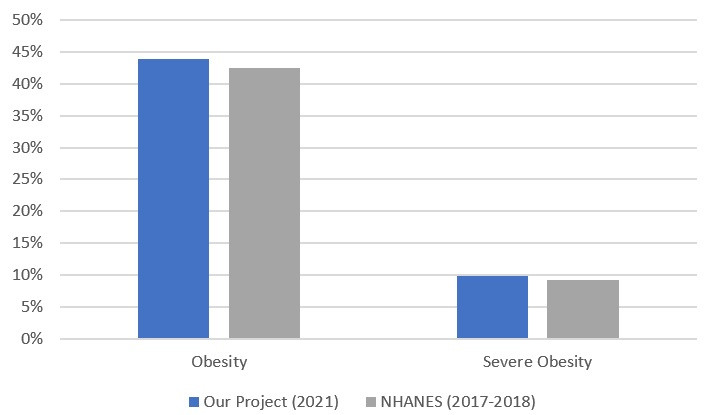Obesity is a serious and costly chronic disease that has been increasingly common among the U.S. population. Electronic health record (EHR) data have the potential to support research and patient care interventions. The timeliness and availability of aggregated clinical data can be used in near-real time to monitor obesity prevalence based on body mass index (BMI) at the population-level to guide policy changes, population health programs, and public health interventions.
BMI is easy to calculate with height and weight measured or assessed at nearly every patient visit by a clinician rather than being self-reported.
In this study, we used EHR data from a geographically diverse set of health care organizations, HSX and OCHIN, to assess current obesity prevalence among more than 2.3 million patients. Our objective was to provide data on obesity prevalence in 2021, including variation across demographic characteristics, which would be more current than national surveillance data. Our results show that, among adults ages 20 to 64, almost 45 percent had obesity of any severity and almost 10 percent had severe obesity. These findings are similar to National Health and Nutrition Examination Survey (NHANES) estimates from 2017 – 2018 where the prevalence of obesity in adults was estimated at 42.4 percent (see Figure 1). Our findings for children were also similar to NHANES.
Figure 1. Obesity (BMI>30) and Severe Obesity (BMI>40) Prevalence for Adults in 2021 vs. NHANES 2017-2018

Our results suggest that EHR data can facilitate timely estimates of the prevalence of obesity and severe obesity among children and adults. EHR data also generate information on obesity prevalence, as the data from this study are comparable to NHANES – the current gold standard for measuring obesity in the US – for overall obesity rates. Therefore, aggregated EHR data could be used for monitoring obesity and trends in BMI in near-real time, as well as for selecting adults and children with obesity for the implementation of public health and individual-level interventions.
